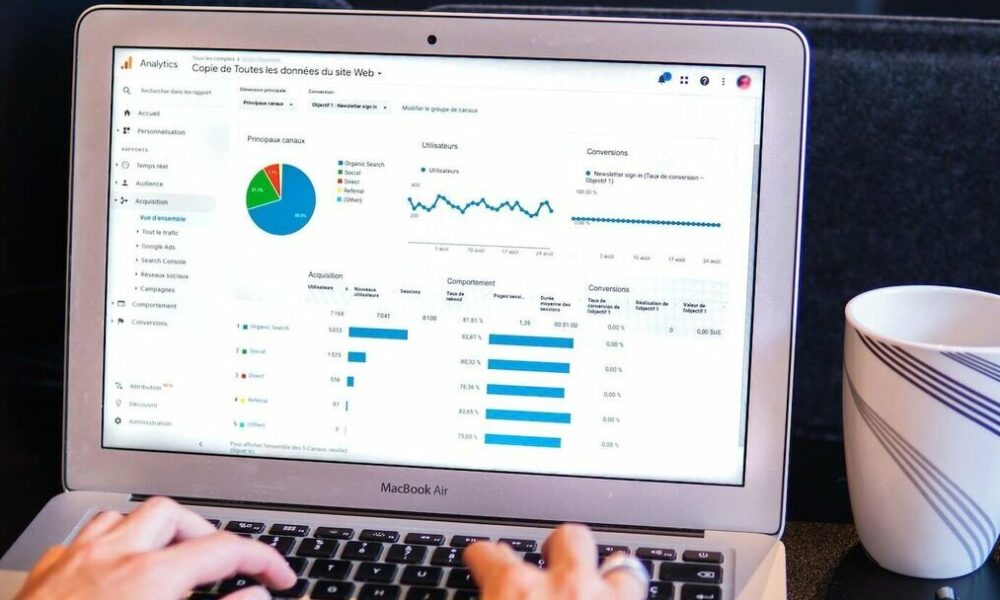
The basic information that all companies that want to work with data must be clear about, in addition to its definition, is related to the different types of analytics that exist, and to the main data analytics models that companies use to achieve the information you want. But it’s also It is advisable that they know the different degrees of maturity of data analytics in terms of its implementation.
In this way they can decide to what extent they want to use and deploy it, or at what point they are if they have already started using it and want to take one or several more steps until its full implementation. On the other hand, it will also benefit them to know those considered as best practices for adopting data analyticsand use it in the best way for the benefit of the company.
Degrees of maturity of the implementation of data analytics
According to the consulting firm Gartner, there are five different levels of maturity for data and analytics models. The first, the Basic, is the one that uses data and analytics, managing them in isolated silos, focusing above all on reviewing past events through logs and transactional data. Of course, in this case, the data analytics processes are carried out when they are needed. Therefore, they have practically no automation or governance rules. Analysts have to use spreadsheets and large volumes of information to work.
The second tier, which Gartner calls Opportunistic, marks the beginning of companies to obtain more information from the data, and with greater availability, for their different business areas. They are also beginning to establish parameters to ensure data quality. Of course, all these efforts continue to be compartmentalized in silos, and the deployment of data analytics at this level is affected by company culture, the lack of appropriate leadership, organizational barriers and the slow proliferation of tools. The data strategy also lacks relevance in the company.
In the third level of maturity, the Systematic, company managers are beginning to become advocates for the use of data and its analytics. They develop a clear strategy and goal, and focus on getting there quickly. Business intelligence and data warehousing capabilities and functions are often adopted at this level, leading to more centralized information management. However, data is still not a key business priority.
Is in the fourth degree of maturity of the implementation and deployment of data analytics, the Differentiator, when data becomes a strategic asset. It serves to link the different business divisions together, and is a key element in driving performance and innovation.
At this point they usually have a person in charge at the address: the CDO, or Data Manager. His mission is to direct everything related to analytics in the company, as well as to measure the return on investment (ROI), while other managers support him, and follow and promote good practices to use the data and the information obtained from them. . At this point there are still some eggs in terms of data governance, and the use made of Artificial Intelligence and machine learning is still limited.
It will not be until highest level of data and analytics implementation maturity, the Transformer, when an organization implements both data and analytics at the core of its business strategy. Also then, the highest level is reached in the implementation of Artificial Intelligence and machine learning to achieve it.
At this point, data has a very important influence on the key business decisions of companies. Companies at this level are more agile, benefit from better integration with vendors and partners, and more easily use predictive and prescriptive types of analytics. All this leads to allowing yourself to get an advantage and differentiation with respect to your competition.
Best practices for the use and implementation of data analytics
Whether your company is going to get into data analytics in 2023, or if it is improving or increasing its practice, these guidelines for proceeding can be very useful. They are considered the best practices for data analytics in 2023, according to VentureBeat.
1 – Improve coordination between people and processes: Before testing new tools and technology for analytics, it is advisable to focus on improving the coordination between people and processes in the company. To do this, it is necessary to end closed and isolated departments, and promote a culture in which data is vital to achieve business objectives. It is also necessary to facilitate access to them, and avoid discussions about the information.
2 – Start with the basics and be clear about the objective to be achieved: After effectively coordinating people and processes, it’s time to specify what you want to achieve with the information available. Your company may have several objectives, so it is important to prioritize to ensure that resources are deployed in the best possible way. Always with the goal of achieving the highest ROI. Also, setting a clear goal can help users avoid the types of data and tools they don’t need.
3 – Audit critical capabilities: Companies would also need to do an audit of the critical analytics capabilities they have. This audit needs to include the ability to measure performance metrics as set targets, the ability to build predictive models, and the quality and granularity of the data you need.
4 – Focus on scalability: When choosing a data analytics tool, it is advisable to consider scalability. This will ensure that your tool continues to be useful to the company even if the volume of data it handles, the depth of analysis that is done with it, and the number of concurrent users grows to a large extent.
5 – Links to regulatory compliance: It is also important to connect and relate data analytics to regulatory compliance. This can help your company ensure that your users follow industry-specific security standards and governance rules when dealing with sensitive business information.
6 – Refine the models: Because business data is constantly changing, the models used to analyze the information should be refined from time to time. In this way, a company can ensure that it is up to date with the market environment and dynamics.
7 – Standardize the reports: Focusing on standardizing reporting tools across the enterprise can ensure that the reports and visualizations produced as a result of the analysis will look the same to all users, regardless of which department they belong to. Having different reporting formats often leads to confusion and misinterpretation.
8 – Data Storytelling: Although visualizations can offer enough information, organizations should also focus on making it more accessible through data storytelling. This can help all business users, even those without analytical skills, to use the information to make decisions.
9 – Schedule a training and skills update: To get the most value from data, it is important to maintain a data culture throughout the organization. You can achieve this through two-way communication, and also by training employees in the value of data and how they can use it to achieve better results.
10 – Monitor the performance of the models: Data can age poorly over time, which can lead to issues with the performance of the models used to analyze it. That is why it is convenient to avoid this by reviewing its performance from time to time. Of course, to take advantage of the current capabilities of the models and maintain competitiveness, this makes it increasingly necessary for you to have systems and support from Artificial Intelligence and data engineering teams, and data science, of your company



